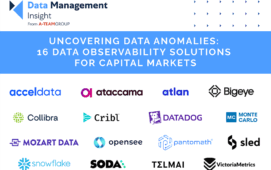The US$15.9 billion merger of Thomson Financial and Reuters earlier in the year has had a significant impact on the merged entity’s profits as well as on its staffing levels. Substantial integration costs have caused the media group and financial data provider’s second quarter profits to fall by 54%.
At the time of the merger, Thomson Reuters CEO Tom Glocer reckoned that the merged group would benefit from more diversified revenue streams and, according to the Q2 results, revenues have risen by 73% over the prior year period to US$3.1 billion. However, profits were hit by around US$141 million in costs as a direct result of the merger.
The firm’s cost savings from the merger totalled US$490 million by 30 June.
“Our strong second quarter results reflect continued momentum among our diverse set of businesses. We are encouraged by the robust revenue growth which we achieved despite the backdrop of a challenging economic environment,” says Tom Glocer, CEO of Thomson Reuters.
Revenues increased for the quarter on previous year’s figures by 11% to US$3.4 billion, and pro forma organic revenue growth was 7%. Thomson Reuters attributes this growth to strong performances across core businesses in both the professional and markets divisions.
Glocer continues: “We have made excellent progress on our integration plan, including the realisation of cost synergies, the streamlining of our product offerings in the markets division, the pursuit of revenue synergies across both divisions and the achievement of our goal of becoming one company in one year.”
Pro forma revenues for the enterprise division grew 23% to US$338 million in the quarter, with organic growth of 14%. The firm attributes this to continued demand for data feeds. Trade and risk management pro forma revenues grew 19% organically, with solid sales of Kondor Plus risk management systems. Information management systems delivered 18% organic revenue growth, a significant improvement after several years of declining revenues.
The merged entity’s combined results for the first quarter of 2008 were also positive: revenues were up 12% and revenues from its enterprise data business were up 18% to US$239 million.
With regards to the next half of the year, Tom Glocer says: “In the near term, we expect to continue to deliver strong underlying profitability through integration-related savings and steady revenue growth, while we transform our markets division to be best positioned to capture the next cycle of strong growth.”
Subscribe to our newsletter




